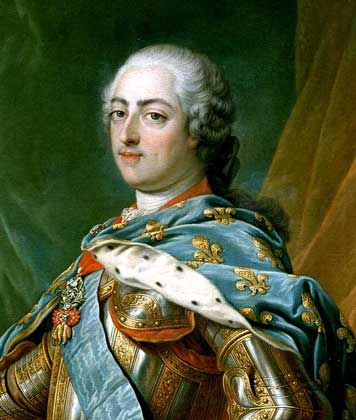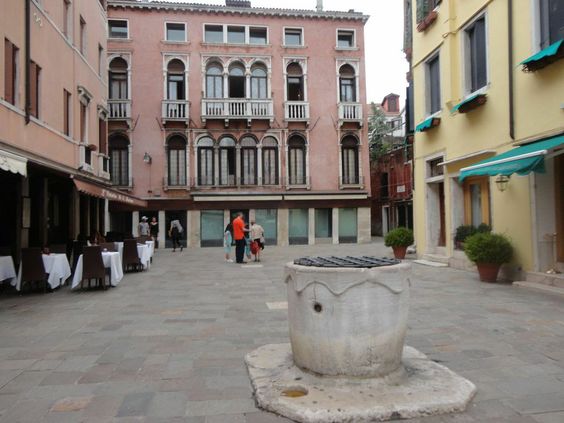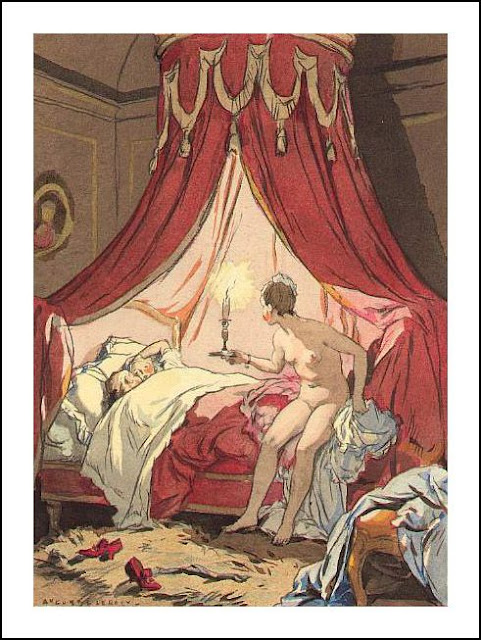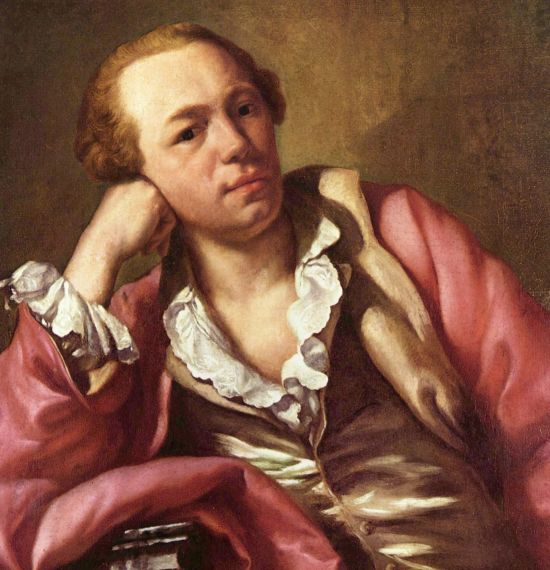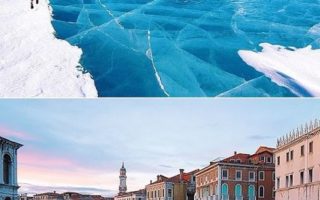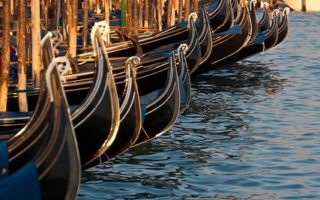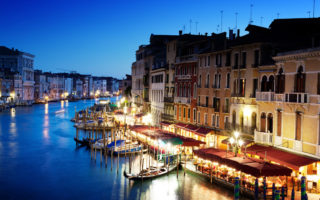The Many Colorful Personas Of Venice’s Giacomo Casanova
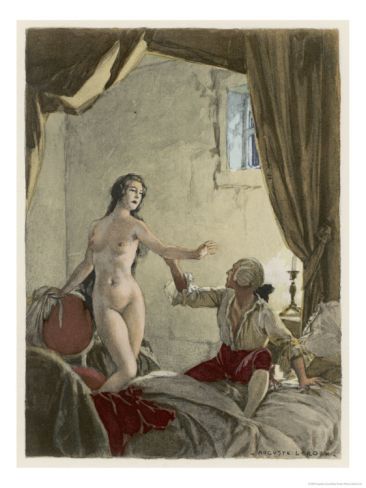 |
| Giovanni Giacomo Casanova Italian Adventurer |
Born ‘Giacomo Girolamo Casanova’ in 1725, when Italy’s Republic of Venice reigned, Casanova’s notorious legacy has lived on for centuries. As a young man living in Paris, he changed his name to ‘Jacques Casanova de Seingalt,’ which better fit his bold spirit and European sophistication. A tall and fashionable man, he wore his hair piled on top of his head, flamboyantly perfumed and curled. Worldwide, he is famous for having many scandalous flirtations and casual sexual affairs; today the term ‘Casanova’ is used to describe men who are devious and unscrupulous wooers of women.
Propelled by an intense appetite for pleasure, excitement, and adventure, Casanova was a lawyer, gambler, clergyman, soldier, musician, spy, and writer. He lived in Italy, France, and many other European countries for short periods, often because his antics forced him to flee. He traveled over 40,000 miles and spent time with countless renowned individuals, including Voltaire, Benjamin Franklin, Jean-Jacques Rousseau, Wolfgang Amadeus Mozart, and Pope Benedict XIV. Because of his remarkable style, charm, wit, cunning, and desire for mischief, Casanova has become an icon of Venice and eighteenth century Italy.
Unearth the many fascinating and diverging personas of Casanova below. To learn more about his influence and that of other important Venetians, read the Ten Venetians who Left Their Mark on the World.
Casanova the Prodigy
 |
| University Of Padua, Italy |
As the oldest of six children with parents who were performers by trade, always inquisitive and bright, Casanova shone as a child. At the young age of twelve, he went to study at the University of Padua. In 1742, at just seventeen years old, he graduated with a degree in law. However, after working for a short time, he found law lacked its original appeal and enough desirable challenges. Casanova quit and began gambling, a hobby which began in university and quickly became intoxicating.
Casanova the Gambler
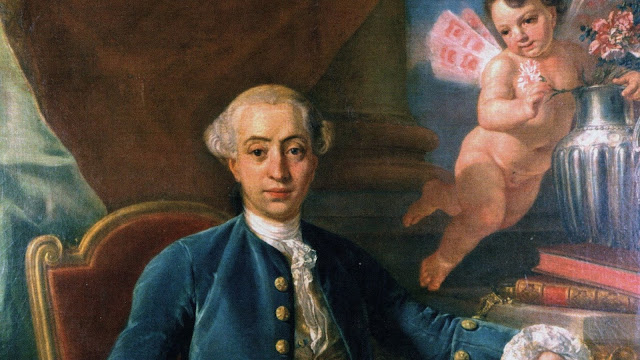 |
| Portrait of Casanova |
Gambling became a lifelong habit for Casanova. It was a recurrent vice that almost brought about his demise many times. After his brief stint in law, Casanova took up gambling as a profession. Throughout his lifetime, he continually won and lost large sums of money, sometimes because of skill, sometimes with luck, but other times by cheating or setting up conducive scams with gambling allies.
Casanova loved the thrill of playing with high stakes and compared gambling to new sexual encounters. Occasionally, after losing badly or when feeling particularly duped, Casanova would challenge his victorious or vexing opponent to a pistol duel. This was also something he did when fighting with another man over an attractive woman.
Casanova the Seducer
 |
Casanova: The Seduction of Europe |
Casanova was introduced to the world of sex and desire by a young female friend at the tender age of eleven. As an adult, he was known throughout Europe for being extremely promiscuous and having causal, often outrageous, escapades with women. Sometimes they were with multiple women or young girls, and occasionally with men. Casanova lived for concocting drama when seducing beautiful, intelligent, alluring women. Ideally, these women needed saving from some deadly threat. Once safe, they presented him with the invigorating challenge of having to be charmed into bed.
Casanova claimed to have had sex with over 120 women in his lifetime. There are numerous instances of Casanova’s pursuit of women getting him into trouble. One especially dangerous one was in Warsaw in 1766. While firing pistols in a duel over a gorgeous Italian actress, Casanova’s left hand was badly wounded. Despite doctors urgently advising that his hand be amputated, he refused to listen. Luckily, not only did his hand recover naturally overtime, Casanova also managed to wound his opponent quite badly and safely flee to Paris.
Casanova the Clergyman
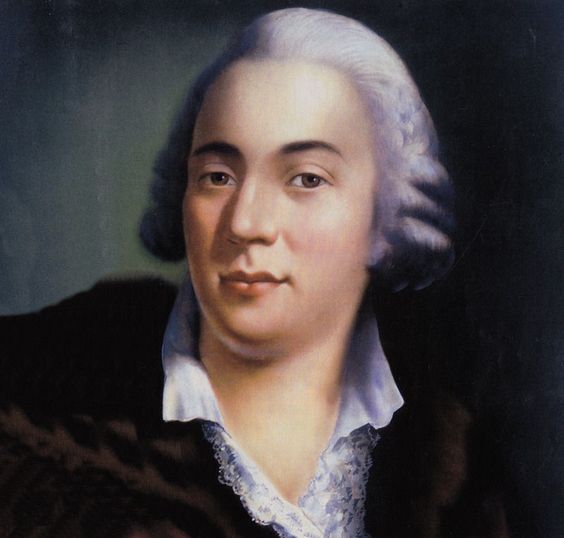 |
| Portrait of Giacomo Casanova |
Without a career, Casanova was on the verge of debt, so he decided to try working in the church. Unsurprisingly, his time in the clergy was riddled with upsets and did not last very long. Soon after joining the clergy, he was imprisoned for the first time because he owed money. Once released, his mother unsuccessfully attempted to get him a job with a bishop. Casanova managed to get a job working as a scribe for Cardinal Acquaviva, a very powerful member of the church in Rome. While working for the Cardinal, Casanova met Pope Benedict XIV and audaciously asked if he could read various books that were banned by the church in Italy. He also wrote love letters to another cardinal. After being caught up in another scandalous love affair, the cardinal dismissed Casanova, effectively ending his career as a clergyman.
Casanova the Soldier
Out of work yet another time, Casanova decided he needed a more interesting and energizing profession, so he enlisted in Venice’s military. Expecting fast-paced, exerting physical work, he found military work boring. Also, military life lacked the freedom to gamble and do as he pleased, so once more, Casanova quit.
Casanova the Violinist
Faced again with the prospect of not having a career or money, Casanova decided to try being a musician. Ultimately, he found being a violinist ‘noble’ work, but he did not have real passion for playing music. He often wandered the streets of Venice looking for amusing people to serenade or to play tricks on. Dissatisfied with playing the violin for little money, Casanova ran into some luck during a fateful gondola ride, which allowed him to abandon it forever.
Casanova the Beneficiary
After an evening celebration, Casanova was in a gondola with a wealthy Venetian noble of the Bragadin family. Although he was quite young, the nobleman had a stroke on the boat. He was administered the typical treatment of the time, which was to be bled and then have mercury applied to the chest. This caused his temperate to rise, throat to swell, and body to begin to shut down. Casanova intervened and ordered that the mercury be removed and cold water applied instead. The nobleman fully recovered and he insisted on being Casanova’s lifelong sponsor.
For three glorious years, Casanova lived luxuriously as a nobleman. He gambled, chased women, and dressed elaborately in the latest fashions, but he soon ran into trouble. The final straw was when he was accused of digging up a recently buried body to play a trick on an enemy. Casanova had to run from Venice.
Casanova the Parisian
Outlawed from Venice for the time being, Casanova followed the Grand Tour, the trip through Europe that many young aristocratic men of the seventeenth and eighteenth centuries embarked on. Afterwards, he decided to stay in Paris. He lived there for two years, mastered French and made connections with noteworthy people in French and European society. In 1753, Casanova returned to Venice, but would return to Paris several times over the next few decades.
Casanova the Prisoner
 |
| Illustration in Casanova’s “Histoire de ma fuite des prisons de la République de Venise qu’on appelle Les Plombs” (Story of my Flight), 1787. From the German edition, 1788 via Google Books |
Back in Venice, Casanova continued to create enemies by throwing around money, fighting in public, and stirring up major controversies. In 1755, he was sentenced to five years in prison for violating religion and common decency. In prison, Casanova believed his only chance to get back to the thrills of life was to escape. Much to his dismay, just three days before he had planned on escaping his dank, dingy cell in solitary confinement, he was moved to a better, brighter cell. This time he had to entail the help of a fellow cellmate, who happened to be a priest. The priest and Casanova managed to cut holes in the prison’s ceiling, escape across the rooftops, and hop into passing a gondola. Knowing he could not stay in Italy, Casanova sought refuge in Paris.
Through his French connections in Paris, Casanova found a new patron and work as a spy. His spy missions were well-paid, but his sudden rise in fortune only increased his gambling and wild spending. Soon, Casanova was in debt once again and imprisoned for four days. When he was released, he had too many enemies who wanted to harm him and he had to reallocate again. Casanova went from Germany to Switzerland and continued to bounce around Europe. In each new country, he had dicey ventures and flirtations with women. He made money only to lose it again and move on to a new place. Because of this reckless lifestyle, Casanova’s name was becoming known across Europe.
Casanova the Writer
While in Prague in 1797, one of Casanova’s favorite cities, Napoleon Bonaparte invaded and took over his home, the Republic of Venice. At the age of seventy-three, it was too late for Casanova to travel to Italy to see home one last time. He died on June 4th, 1798.
Throughout his life, Casanova wrote and translated plays, satire, and stories. People have remembered Casanova and know so much about his inner thoughts and feelings, because he wrote an autobiography called ‘Histoire de Ma Vie,’ or the ‘Story of My Life.’ First completed in 1792 and revised until his death, this book is a major reason why Casanova has not been forgotten. The autobiography helped make him the compelling and shocking Venetian icon he is today.
Casanova in Venice Today
When visiting Venice, wander the magical streets and hypothesize about which aspects of his birthplace most influenced him to embody so many professions and personas. What propelled Casanova to continue seeking out danger in work, life, and love? Was it simply the potential for absolute euphoria? Or did the vibrancy of Venice’s ethereal beauty and extravagance of the Venetian nobility and their culture of masquerade parties play a part?
Explore Venice’s most famous landmarks, like Saint Mark’s Square and the Rialto Bridge, and then visit the recently opened Casanova Museum and Experience to learn more about the man himself. The museum, which is in ‘Palazzo Papafava’ near the boat-filled Grand Canal, uncovers Casanova’s real story. The palace’s six ornate rooms allow visitors to peek into the lavish lifestyle of Venice’s elite and learn about the vicious hustle that the rest of the eighteenth century population faced. For visitors who are interested in art and other Venetian museums, look at this up-to-date guide of Venice’s Modern and Contemporary Art.
Inspired by Casanova’s sense of adventure, explore Venice’s waterways and maze of streets on an Evening Boat and Walking Tour. After sunset, the canals, which are constantly bustling during the day, are quieter and more mysterious. The secrets held in Venice’s water, twisting streets, and hidden piazzas come out with the murmuring of Venetians dining and the sounds of gondolas gently rocking in their moorings for the night. There are undeniable hints of the same exciting energy that Casanova felt. Venice enticed Casanova to repeatedly seek out thrilling escapades and diverse pursuits.
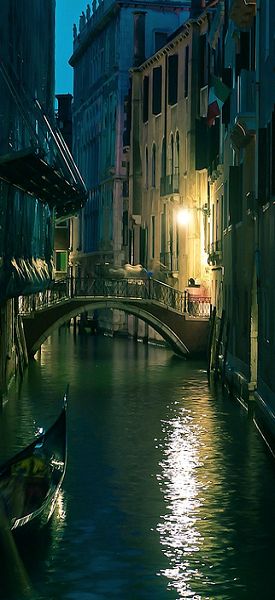 |
| Venice At Night |
From all of us at Roman Candle Tours enjoy seeing Venice through the eyes of the rambunctious and extraordinary Giacomo Casanova, one of the original Venetians.



